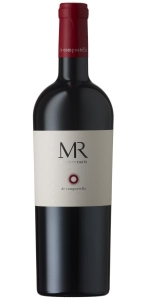Wine from Raats Family Wine
Cabernet Franc and Chenin Blanc. That’s it. Since 2000, founder Bruwer Raats has kept his focus on these two varieties, believing that specialising would lead to success. This belief was not unfounded, as today, Raats Family Wines is regarded as a leader of South Africa’s Chenin Blanc and Cabernet Franc, receiving consistent local and international accolades.
With Gavin Bruwer joining Raats’ side in 2010, the family affair has one shared mission: to consistently produce Chenin Blanc and Cabernet Franc of outstanding quality from South Africa and to establish these wines as international benchmarks.
As the Raats philosophy continues to flourish, new, curated additions have been introduced along the way. This includes the well-received, vineyard-driven B Vitiners Vine Exploration Co. range, and the single wine, speciality bottling of MR De Compostella – an incredibly successful collaboration between Raats himself and fellow winemaker and long-time friend, Mzokona Mvemve.
Based in the winemaking capital of Stellenbosch, Bruwer, Mzokona and Gavin’s winemaking criteria is rigorous, and includes the quality of grape, soil, climate, topography and of course the impact of the human hand, which together, embodies the truest meaning of terroir.
Raats MR Mvemve Raats de Compostella is made from 63% Cabernet Sauvignon, 17% Cabernet Franc, 12% Malbec, 6% Petit Verdot, 2% Merlot
The name de Compostella (meaning “field of stars” or “compilation of stars”) was chosen to reflect the fact that each component is crafted to stand alone as a world class varietal wine. The wine exhibits a deep, dark ruby color. Blackcurrant and black cherry fruit with hints of violets, cedar and cinnamon are revealed on the nose. The palate is rich and complex with mineral, blackberry fruit and dark chocolate on the finish. The five Bordeaux varietals harmoniously convene in this consistent, linear flavor profile that is polished with a well-defined finish.
Review:
he 2020 De Compostella is composed of 30% Cabernet Franc, 28% Cabernet Sauvignon, 21% Malbec, 16% Merlot and 5% Petit Verdot. Beginning with a focused, juicy and complex nose of dark red fruits, the wine has impeccable balance between oak, fruit and earthy floral tones. Full-bodied and with succulent acidity, the palette offers a firm frame of fine-grained tannins, while the fruit profile makes way for elegant earth and notes of crème de cassis sway with subtle flavors of sage and spiced plum. The red blend continues to somersault and reveal its complexities over the long-lingering and ever-evolving finish. Be patient with this exceptional wine
-Wine Advocate 95 Points
- back
Selected Options
Wineries
Categories
Pricing
Countries
Regions
Grape Types
Wineries
Organic/Free Shipping
Corne Loup Cotes du Rhone Blanc is made from 50% Grenache Blanc, 20% Clairette, 15% Roussanne and 15% Viognier.
The wine has a pale straw color with brilliant reflection. In the nose, it displays great aromatics, mainly citrus fruit. The palate is well balanced, with a lot of finesse and persistence.
Delicious when paired with seafood (seashell and fish). It is also great by itself as an aperitif.





